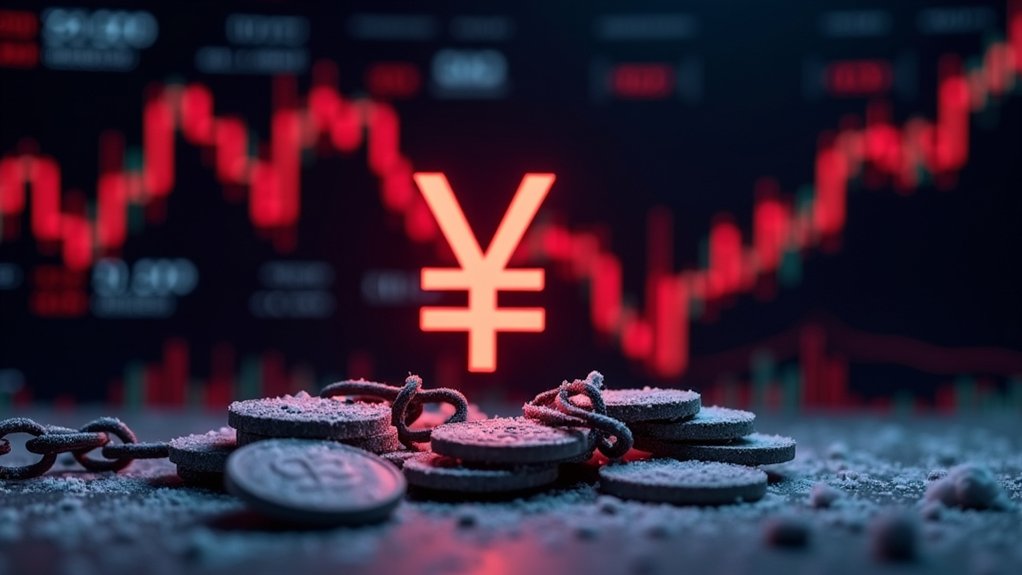Cryptocurrency markets don’t close like traditional stock exchanges. They operate 24 hours a day, seven days a week, all year round, including holidays. While trading activity peaks during regular business hours in major financial centers, buyers and sellers can trade at any time through decentralized networks. Some platforms may have brief maintenance periods, but the overall crypto market infrastructure stays active. Understanding the market’s continuous nature helps traders plan their strategies effectively.
Quick Overview
- Cryptocurrency markets operate 24/7/365, with no regular closing hours like traditional stock markets.
- While individual trading platforms may have maintenance windows, the overall cryptocurrency market never completely closes.
- Trading can occur at any time through decentralized networks, even during weekends and holidays.
- Some centralized exchanges schedule brief maintenance periods, but users can switch to alternative platforms during these times.
- The continuous operation of crypto markets enables global trading across all time zones without interruption.

Unlike traditional stock markets, cryptocurrency markets never truly close. They operate continuously, 24 hours a day, 7 days a week, throughout the entire year. This non-stop trading environment exists because cryptocurrencies run on decentralized networks of computers spread across the globe, allowing traders to buy and sell at any time, even during weekends and holidays. The decentralized nature of these markets ensures that direct fund transfers can occur between parties without intermediary involvement.
While crypto markets are always open, there are certain times when trading activity is more intense. The busiest trading hours typically align with standard business hours in major financial centers, particularly between 8:00 AM and 4:00 PM Eastern Standard Time. During these peak hours, trading volumes reach their highest levels, which often leads to increased price volatility. Weekend trading tends to be quieter, with fewer active traders participating in the markets. Users can choose between centralized exchanges or decentralized platforms based on their privacy preferences and trading needs.
Though cryptocurrency markets operate around the clock, traders might occasionally encounter brief interruptions when using specific trading platforms. Cryptocurrency exchanges sometimes need to perform routine maintenance to keep their systems running smoothly. These maintenance periods are usually scheduled in advance, and exchanges notify their users before any planned downtime. Trading during off-peak hours can result in limited liquidity for certain transactions.
Some platforms have daily maintenance windows, such as from 5:30 PM to 6:05 PM Eastern Time, while others schedule maintenance early in the morning between 5:00 AM and 8:00 AM Eastern Time.
It’s worth noting that not all cryptocurrency trading platforms follow the same schedule. Some platforms that offer cryptocurrency CFDs (Contract for Difference) maintain more limited trading hours. Other platforms might only operate 24/5 instead of the standard 24/7 schedule. Additionally, trading hours can vary depending on the specific cryptocurrency being traded, as some platforms impose different trading windows for different digital assets.
The continuous availability of cryptocurrency markets represents a significant departure from traditional financial markets, which typically operate on fixed schedules and close for weekends and holidays. This round-the-clock access has become one of cryptocurrency’s most appealing features, attracting traders who want the flexibility to react to market movements at any time.
Despite occasional maintenance periods and platform-specific limitations, the core cryptocurrency market infrastructure remains operational at all times, enabling global trading across different time zones without interruption.
Frequently Asked Questions
How Do Cryptocurrency Exchanges Handle System Maintenance and Upgrades?
Cryptocurrency exchanges handle maintenance and upgrades during off-peak hours to minimize disruption.
They’ll typically announce scheduled downtime in advance through their website, email, and social media.
During maintenance, which usually lasts 2-3 hours, trading and transactions are temporarily suspended.
Exchanges keep users updated in real-time through official channels.
They perform these updates to improve security, fix bugs, scale infrastructure, and implement new features.
What Happens to Pending Cryptocurrency Transactions During Network Congestion?
During network congestion, pending crypto transactions can get stuck in a waiting area called the mempool.
It’s like a traffic jam – transactions with higher fees move faster, while those with lower fees wait longer. Users might experience delays from a few hours to several days.
The network slows down as it reaches its maximum capacity, and transaction fees typically go up as people compete to get their transfers processed first.
Can Power Outages or Internet Disruptions Affect Cryptocurrency Trading?
Power outages and internet disruptions can definitely affect cryptocurrency trading.
When the power goes out, crypto miners can’t run their computers, which slows down the entire network. During a 2021 blackout in Xinjiang, Bitcoin’s network speed dropped by 25%.
Internet outages are also a big problem – they stop people from making transactions or accessing their crypto wallets.
These disruptions often cause crypto prices to bounce up and down unpredictably.
Do Cryptocurrency Trading Bots Operate Continuously in the Market?
Cryptocurrency trading bots operate 24/7, constantly monitoring markets and executing trades automatically. They don’t need breaks or sleep like human traders do.
These bots can process market data and make trading decisions in milliseconds, responding to market changes around the clock. They’re designed to work continuously, analyzing multiple exchanges at once and acting on predefined trading rules.
However, they’ll only work as long as there’s power and internet connectivity.
How Do Different Time Zones Impact Cryptocurrency Trading Volumes?
Different time zones create distinct patterns in cryptocurrency trading volumes.
The busiest trading happens when European and U.S. markets overlap, typically between 13:00-17:00 GMT. Trading picks up when European markets open around 08:00 GMT and jumps again when U.S. markets start at 13:00 GMT.
Asian trading hours (23:00-08:00 GMT) show moderate activity, while early UTC hours (02:00-06:00) have the lowest volumes.
Weekend trading is usually quieter across all zones.





